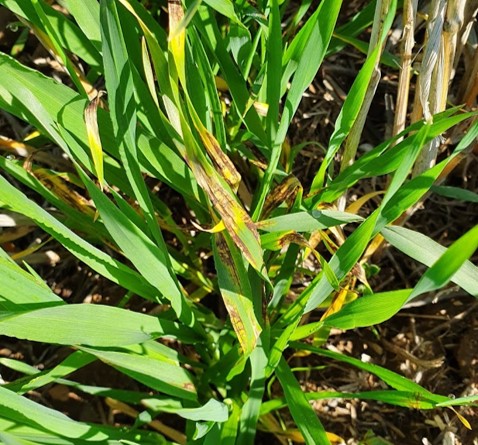Volunteer plants increase disease risk
Higher than average rainfall in many areas of the state in January and February has led to a rise in the number of volunteer or self-sown plants.

Significant green bridges going into the 2022 season have been reported on the Yorke and Eyre peninsulas, but other areas of the state will also be affected. Green bridges created by volunteer plants or plant material on roadsides and paddock perimeters can increase disease and pest risks early in the growing season.
Growers should be aware of stubble-borne diseases starting on volunteers such as barley net blotches (net form net blotch and spot form net blotch) and wheat powdery mildew. Disease on volunteers can increase inoculum levels early in the season and drive disease epidemics through spore levels within the region. Soil-borne diseases such as rhizoctonia root rot can also be hosted on volunteer cereals and increase the disease risk in the crop.
Rust disease levels in the eastern states in the 2021 growing season, combined with the significant green bridge, have led to high inoculum levels of wheat stripe rust. Subsequently, pathologists in the eastern states are issuing stripe rust warnings for the 2022 growing season. While stripe rust levels in SA last year were not significant, the risk from the eastern states combined with green bridges in SA are cause for growers to be alert going into the 2022 growing season.
For effective green bridge control, weeds and volunteers should be completely dead four weeks prior to sowing. With the season break drawing close, this window is rapidly closing. In areas where the green bridge has increased the risk of diseases and pests, growers are encouraged to monitor crops early this season to aid effective disease management.
More information on green bridge control and the associated pest and disease risks can be found in this GRDC factsheet.
